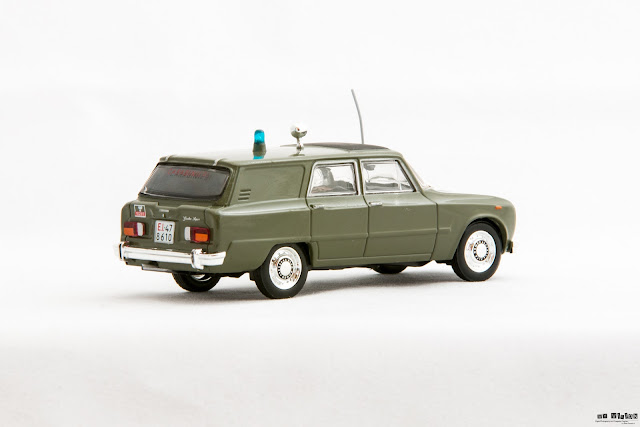Monday 18 January 2016
The Alfa Romeo Giulia (Type 105) is a sports saloon which was produced by Italian car manufacturer Alfa Romeo from 1962 to 1978. Alfa Romeo was one of the first manufacturers to put a powerful engine in a light-weight car for mainstream production. The Giulia weighed about 1,000 kilograms (2,205 lb). The car was equipped with a light alloy twin overhead camshaft four-cylinder engine, similar to that of the earlier Giulietta models range. Engine capacities offered were 1.3-litre (1,290 cc) or 1.6-litre (1,570 cc). Various configurations of carburetors and tuning produced power outputs from about 80 to about 110 bhp (55 to 75 kW). Almost all Giulias made had a 5-speed manual transmission. Giulias were noted for their lively performance among sedans of that era, especially considering the modest engine size. The popular Super version with the twin carburettor 1.6 litre engine had a top speed of 170 km/h (106 mph). 0 to 100 km/h (62 mph) took about 12 seconds. This performance was better than many sports cars of the late 1960s and early 1970s. When leaving the factory all variations of the Giulia originally fitted either Pirelli Cinturato 165HR14 tyres (CA67) or Pirelli Cinturato 155HR15 tyres (CA67).
The styling was quite straight forward, but with a great amount of detail. The engine bay, cabin and boot were all square shaped. But the grill, the rooflines and details on the bonnet and boot made for an integrated design from bumper to bumper. Thanks to Alfa Romeo using a wind tunnel during its development, the Giulia was very aerodynamic with a drag coefficient of Cd=0.34, which was particularly low for a saloon of the era.
Tipo 105.14 was the first model introduced in 1962. 1,570 cc Alfa Romeo Twin Cam engine with single down-draft carburettor, 92 PS (68 kW; 91 hp) at 6500 rpm. The "TI" nomenclature referred to a class of Italian saloon car racing known as "Turismo Internazionale", and had previously been applied to higher-performance versions of the 1900 and Giulietta saloons in the 1950s. However, for the Giulia saloon, the Ti was at first the only version available, and later, with the introduction of the TI Super and Super, the TI became the base version for the 1,600 cc engine class. Steering column gearchange (the only one in the Giulia range) replaced with floor change for 1964 (Tipo 105.08). Right hand drive available from 1964 with floor change only (Tipo 105.09). Brakes were by drums all around at first. Discs were introduced later, first at the front, and later all around. A brake servo was not fitted at first, but was introduced in later cars. The steering wheel featured the only horn ring ever in the Giulia range. The dashboard with a strip speedo is a notable feature, as is the steering wheel with a horn ring. The Giulia TI was phased out in 1968 and re-introduced as the austerity model 1600 S.
Technical data:
- engine: 4 cylinders
- capacity: 1570 cc
- horsepower: 110 HP
- gearbox: 5+1
- top speed: 170 km/h







Brak komentarzy:
Prześlij komentarz